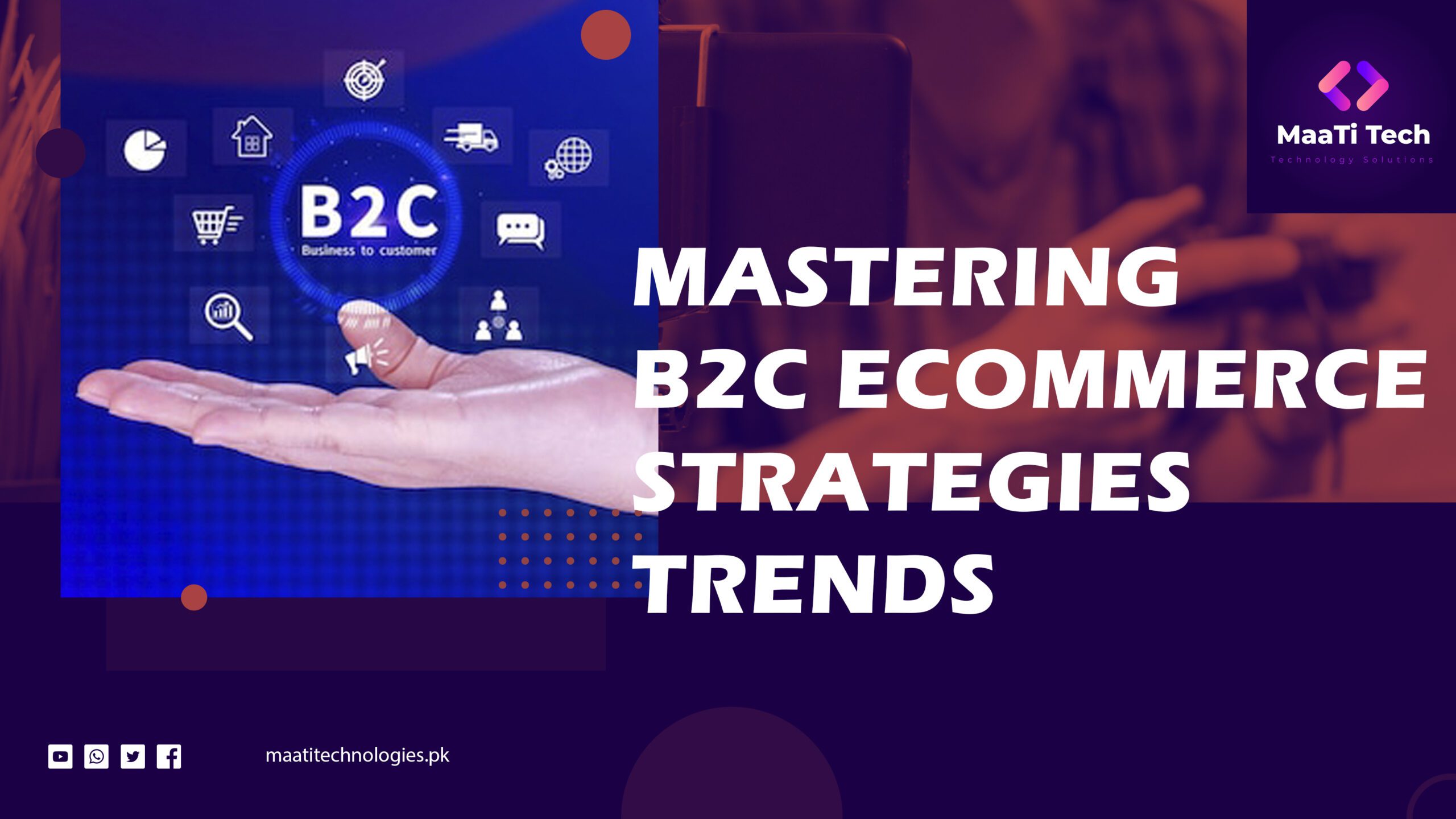Introduction to B2C Ecommerce
In the rapidly evolving digital landscape, business-to-consumer (B2C) ecommerce has become a powerful force, transforming how businesses interact with customers. B2C ecommerce refers to transactions where businesses sell directly to individual consumers via online platforms. With the rise of smartphones, internet accessibility, and digital payment systems, B2C ecommerce has seen explosive growth worldwide. This article delves into the key strategies, trends, and best practices that can help businesses succeed in the competitive world of B2C ecommerce.
Table of Contents
The Growth and Importance of B2C Ecommerce
Over the past decade, B2C ecommerce has grown significantly, driven by advancements in technology, changing consumer behaviors, and the global pandemic. According to Statista, global B2C ecommerce sales are expected to reach $6.54 trillion by 2024, up from $4.28 trillion in 2020. This growth highlights the importance of B2C ecommerce for businesses looking to expand their reach, enhance customer experiences, and increase revenue.
One of the key drivers behind the success of B2C ecommerce is the shift in consumer behavior. Today’s consumers expect convenience, speed, and personalized experiences when shopping online. Businesses that can meet these expectations are more likely to succeed in the competitive ecommerce landscape. Furthermore, the ability to reach a global audience, lower operational costs, and access to data-driven insights make B2C ecommerce an attractive option for businesses of all sizes.

Key Strategies for B2C Ecommerce Success
- Understanding Your Target Audience
Knowing your target audience is the foundation of any successful B2C ecommerce strategy. Understanding their preferences, buying behaviors, and pain points allows businesses to tailor their products, marketing messages, and customer experiences accordingly. Conducting market research, analyzing customer data, and creating detailed buyer personas can help businesses gain valuable insights into their audience. By delivering personalized experiences, businesses can build stronger relationships with customers and drive loyalty.
- Optimizing the User Experience (UX)
A seamless and intuitive user experience is crucial for B2C ecommerce success. Websites that are easy to navigate, load quickly, and offer a mobile-friendly experience are more likely to convert visitors into customers. Key elements of a strong UX include clear calls to action, streamlined checkout processes, and high-quality product images. Additionally, providing detailed product descriptions, customer reviews, and multiple payment options can enhance the shopping experience and reduce cart abandonment rates.
- Leveraging Data and Analytics
Data is the lifeblood of B2C ecommerce. Businesses that leverage data and analytics can gain valuable insights into customer behavior, sales trends, and marketing performance. Tools like Google Analytics, heatmaps, and customer feedback surveys can provide actionable data that businesses can use to optimize their ecommerce strategies. For example, by analyzing shopping cart abandonment data, businesses can identify friction points in the checkout process and make necessary improvements.
- Implementing a Robust Digital Marketing Strategy
A comprehensive digital marketing strategy is essential for driving traffic, increasing brand visibility, and boosting sales in the B2C ecommerce space. Key components of a successful digital marketing strategy include:
- Search Engine Optimization (SEO): Optimizing your website for search engines ensures that your products and services are discoverable by potential customers. This includes using relevant keywords, optimizing meta tags, creating high-quality content, and improving website speed.
- Social Media Marketing: Social media platforms like Facebook, Instagram, and Twitter are powerful tools for engaging with your audience, building brand awareness, and driving traffic to your ecommerce site. Businesses can use targeted ads, influencer partnerships, and user-generated content to reach a broader audience.
- Email Marketing: Email marketing remains one of the most effective channels for nurturing leads and driving repeat sales. Personalized email campaigns, abandoned cart reminders, and loyalty programs can help businesses build stronger relationships with their customers.
- Content Marketing: Creating valuable and relevant content, such as blog posts, videos, and infographics, can help businesses establish authority in their niche and attract organic traffic. Content that addresses common customer questions, offers product guides, and highlights industry trends can position your brand as a trusted resource.
Emerging Trends in B2C Ecommerce

- Personalization and AI-Powered Experiences
Personalization is becoming increasingly important in B2C ecommerce. Consumers expect tailored experiences that cater to their individual preferences and needs. Artificial intelligence (AI) and machine learning (ML) technologies are playing a crucial role in delivering personalized experiences at scale. From product recommendations to personalized email campaigns, AI-powered solutions can help businesses create more relevant and engaging customer interactions.
- The Rise of Mobile Commerce
With the increasing use of smartphones for online shopping, mobile commerce (m-commerce) is a trend that businesses cannot afford to ignore. In 2021, mobile commerce accounted for 72.9% of all ecommerce sales worldwide. To capitalize on this trend, businesses must ensure their websites are fully optimized for mobile devices. This includes responsive design, fast loading times, and easy-to-use navigation. Additionally, mobile payment options such as Apple Pay and Google Wallet are becoming more popular, offering consumers a seamless and secure checkout experience.
- Social Commerce and Influencer Marketing
Social commerce, which involves selling products directly through social media platforms, is gaining traction in the B2C ecommerce space. Platforms like Instagram, Facebook, and Pinterest now offer features that allow businesses to showcase and sell products directly to their followers. Influencer marketing is also becoming a key component of social commerce, with businesses partnering with influencers to promote their products and reach new audiences.
- Sustainability and Ethical Consumerism
Consumers are becoming more conscious of the environmental and social impact of their purchases. As a result, sustainability and ethical consumerism are emerging as important trends in B2C ecommerce. Businesses that prioritize eco-friendly practices, ethical sourcing, and transparent supply chains can attract socially conscious consumers. Highlighting these efforts in marketing campaigns and product descriptions can help businesses build trust and differentiate themselves from competitors.
Best Practices for B2C Ecommerce
- Optimize for Voice Search
As voice-activated devices like Amazon Alexa and Google Home become more popular, optimizing for voice search is essential. Voice search queries tend to be longer and more conversational, so businesses should focus on long-tail keywords and natural language. Additionally, ensuring your website is mobile-friendly and has fast loading times can improve your chances of ranking in voice search results.
- Enhance Customer Support
Providing excellent customer support is key to building trust and retaining customers in the B2C ecommerce space. Offering multiple support channels, such as live chat, email, and social media, ensures customers can get help when they need it. Implementing chatbots and AI-driven customer service solutions can also improve response times and reduce the workload on support teams.
- Utilize User-Generated Content
User-generated content (UGC), such as customer reviews, photos, and testimonials, is a powerful tool for building credibility and trust. Encouraging satisfied customers to share their experiences with your products can help attract new customers and improve conversion rates. Displaying UGC prominently on your product pages and social media channels can also boost engagement and drive sales.
- Focus on Cybersecurity
With the increasing volume of online transactions, cybersecurity is a top priority for B2C ecommerce businesses. Implementing secure payment gateways, SSL certificates, and two-factor authentication can protect customer data and prevent fraud. Additionally, educating customers about safe online practices and regularly updating your security protocols can help build trust and protect your brand reputation.
Conclusion
B2C ecommerce is a dynamic and rapidly growing industry that offers businesses unparalleled opportunities for growth and success. By understanding the latest trends, implementing effective strategies, and following best practices, businesses can thrive in the competitive world of ecommerce. Whether you’re a startup or an established brand, embracing the power of B2C ecommerce can help you reach new customers, increase sales, and build a strong online presence.



